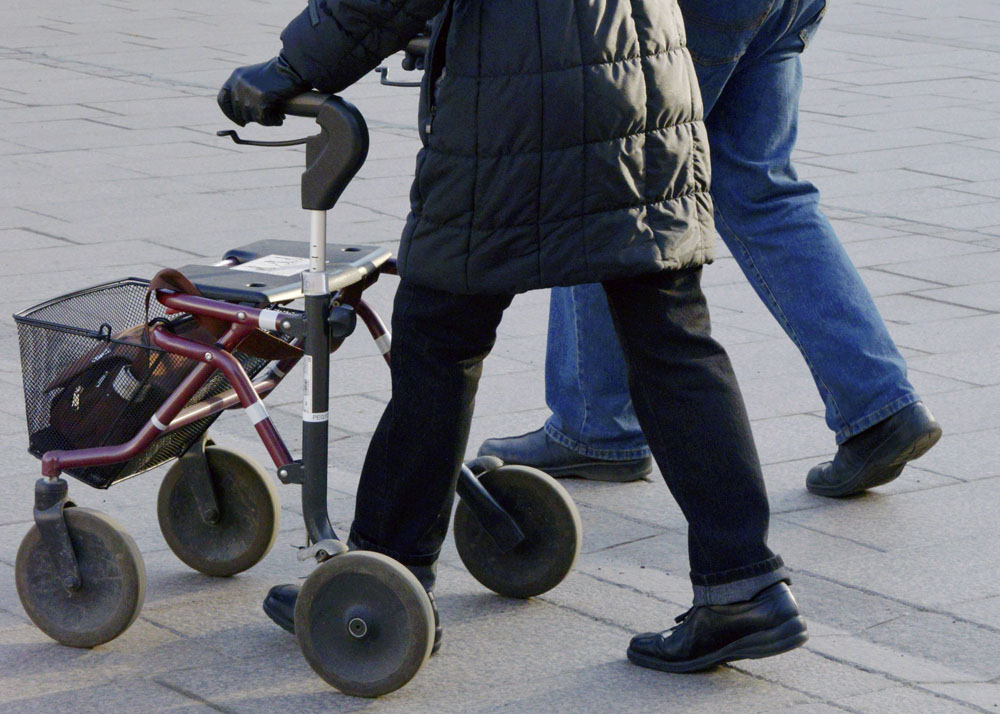Better and more effective healthcare for the same money: support in decision-making for healthcare professionals and new ways for service users to assess their health status. These are promises made by the developers of Care Gap, a tool that will combine different data materials to assess the care deficit.
It all sounds very good, but how can Care Gap help an individual person with high blood sugar, for example?
“That is a good example as people always pay attention to the blood sugar only, even though the problem is often risks that have accumulated,” says Risto Mäkinen, Chief Medical Officer of healthcare services of the City of Helsinki, rejecting the case example.
So, let’s start from the beginning and approach the issue with the help of an imaginary person. We’ll call this person Reino. Unlike his friends, Reino has sought help from healthcare services. Reino is overweight and depressed, and he also suffers from diabetes, the disease often used as an example. His blood pressure is high.
Customers like Reino often use the services of diabetic nurses. Their treatment can then be focused on taking care of the blood sugar. But at the same time, less attention may be paid to losing weight and treating depression, or these may go totally unnoticed.
Risk and care needs assessments have been made for a long time now, but mainly at the level of the whole population, for example by age group. The aim is a personal and systematic care needs assessment drawn up by combining information from several different sources.
Towards a comprehensive understanding of human health
As the name suggests, Care Gap is a tool for assessing the care deficiency. But first, it has to be decided what aspects are considered when the care deficiency is assessed. The health and social services in Helsinki have decided on ten indicators of chronic diseases to be recorded for each patient. These are weight, smoking, blood pressure, cholesterol, blood sugar, depression, alcohol, memory disorder, periodontitis (the disease of the tissue surrounding the teeth) and caries.
“My guess is that they explain the majority of preventable cases of people falling ill or dying,” says Mäkinen.
The aim is also to later start using well-being indicators alongside the above-mentioned health indicators. They could be linked, for example, to unemployment or homelessness, but work is still under way to define these indicators. At the moment, the City of Helsinki is evaluating the recorded health data by assessing how comprehensive it is and what the quality of the data is. Next, a plan will be made on how to improve the data. Once the first version of the analysing tool is used in production, a Care Gap analysis will be run on the existing data of the population of one of the health stations.
That is to say that, in Helsinki, observations will from now on be recorded based on the above-mentioned indicators. In the near future, the Care Gap analyser will be able to evaluate Reino’s care and say that his blood sugar is under control, but that the most effective thing to do would in fact be to pay attention to his weight and depression. The health and social services professionals could then together with Reino choose where to start, and find a solution to which Reino would also be prepared to commit. According to Mäkinen, it is unlikely that the blood sugar level can be improved before the other problems have been dealt with.
“This would be the course of action, and not insisting on treating the blood sugar problem with expensive medicines instead of forming an overall picture of the patient’s health,” says Mäkinen.
Sitra is participating in the development of the tool and financing the development of the care gap algorithm, the development of the program code and the piloting. Its partners in the pilot project are the City of Helsinki and the health and social security enterprise Saarikka.
To the core of effectiveness by multiplication
The Care Gap analysis is based on a multiplication formula, in which three factors are considered: the estimated effectiveness of the treatment, knowledge of the starting level of the person assessed and the estimated importance of each treatment for the person in question. To put it simply, the figures describing these factors are multiplied by each other and the result is the estimated “potential to benefit from care and treatment”.
Ilkka Kunnamo, a health centre doctor at the health and social security enterprise Saarikka, who has for a long time been developing support for decision-making and is the “father” of the Care Gap analysing tool, says that the calculation has been made possible by developments in gathering and organising medical data. For example, assessing the relative effectiveness of different treatments, such as by how much the prognosis in the case of a myocardial infarction or stroke can be improved with a specific treatment, is easier today.
The development of technology and digitisation, among other things, have provided new resources for assessing the starting levels of individual service users. If a person has a very low risk of myocardial infarction, the absolute benefit gained by reducing that risk by, say, 25 per cent will not be very big. If the risk is one in a thousand people and the risk is lowered by 25 per cent, according to statistics, 4,000 people will have to be treated for one person to benefit. But if the risk in one of the groups is one in ten and we try to reduce it by 25 per cent, we only need to treat 40 people for one person to avoid a myocardial infarction.
When we multiply the effectiveness of the treatment with the personal “starting level risk”, we will know how much the person in question may benefit from the specific treatment. However, a third figure is still needed. It is the estimated importance of the particular treatment for this person, and the person himself or herself may also have a say in this.
“Avoiding death is definitely more important than avoiding flatulence,” Ilkka Kunnamo says.
Cost efficiency in services; equality for users
But what does the result of the above-mentioned calculation tell the different social welfare and healthcare operators, in other words the users, providers and organisers of the different services?
From the point of view of the organisers of health and social services, which will from now on be the counties, the clear benefits include better equality and better ways to provide access to treatment early enough for everyone that will benefit from the particular treatment. A virtual health check-up will also identify people who have slipped through the net, i.e. those who have for some reason not sought services or to whom services have not been available. Care Gap will help to narrow down the health and well-being gaps, which are rather large in Finland. It will help to direct resources to services that produce the most health and well-being benefits.
Improving cost efficiency is also in the service provider’s interests, if and when the money follows the customer in future and the compensation paid to the provider for services produced with public funding is a client-specific fixed amount of money according to the so-called capitation model. Care Gap will also provide tools for the organiser responsible for the services and service users to assess the quality of the service providers, whether the right things are done to the right people at the right time.
The service user will also benefit from new tools for choosing what kinds of treatments he or she wants and consents to. Most treatments, however, cause at last some inconvenience and may also incur costs for the service user, in which case it is important for the service user to know what benefits can be expected from the different alternatives.
To function, Care Gap needs the most comprehensive possible health data on the person. This will be possible as every Finn will soon be able to store in the My Kanta database the data they have recorded themselves and the results of measurements they have taken at home, or direct the data to be stored there automatically. People can decide themselves whether they want to share this data with the professionals caring for and treating them, and can always use the data themselves by checking the results of their own Care Gap analysis. In the analysis, the data generated by the person is combined with the data generated by patient records and the professionals in the Kanta archive.
“This can only be done in Finland”
Data, algorithms and new analysing tools may play a big role in the development of better services. However, Risto Mäkinen brings up one more factor without which even the finest of innovations will only remain half complete: trust.
“As far as I can tell, a system like Care Gap could not be made anywhere else but Finland. Our country combines a unique digital medical intelligence and the knowledge that people trust the structures of society. Care Gap can only be developed in a society based on trust like Finland. If we were in the Silicon Valley, we would have the ingredients for an international export product here,” says Mäkinen.




Recommended